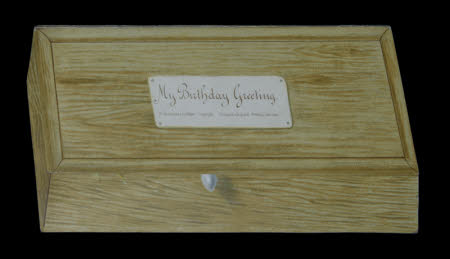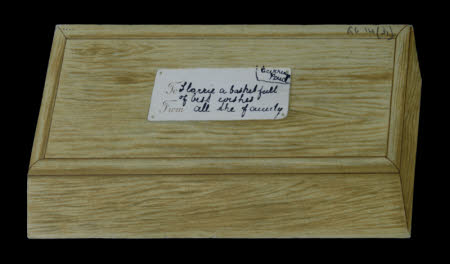Newspaper clipping
Category
Ephemera
Date
Unknown
Materials
Paper
Order this imageCollection
Mr Straw's House, Nottinghamshire
NT 3125114.2
Summary
Newspaper cutting from the Worksop Guardian Supplement. Side one: Top of the page the cut off words 'SUPPLEMENT TO THE WORKSOP GUAR' beneath which the article with an illustration to the bottom of 'FORRESTS YARD. LEAD MILL. WORKSOP. IS THE HOUSE WHERE MISS ROBINSON THE SUPPOSED OUTSIDE CORRESPONDENT TO THE DUKE OF PORTLAND LIVED'. The article reads 'FULL CONFESSION BY MISS ROBINSON. FALSE EVIDENCE IN THE DRUCE CASE. CHARGES BY THE CROWN CONFIRMED. With dramatic suddenness and brevity Sir Charles Mathews, the Treasury counsel, an-nounnced on Tuesday in Bow-street Pollos Court that Mary Robinson, the Druce case diarist, who is accused of perjury, had made a confession. Her confession confirmed the main lines of the story he had narrated when opening the case for her prosecution......'. Side two: Top of the page the cut off words 'GUARDIAN, FRIDAY, FEBRUARY 7, 1908.' beneath which the 'News of the District.' including 'CUCKNEY.... CHECKERHOUSE.... CRESSWELL.... TICKHILL...'. The cutting is kept in the book 'The Druce-Portland case' by Theodore Besterman (1904-1976) (record 3125114). The 'Druce case', ran from 1897 to 1908, attracted popular national interest, but had a special significance for people in Nottinghamshire. Detailed evidence about it survives in the Portland (London) archive at the University of Nottingham. The case began with an allegation that the 5th Duke of Portland (1800-1879) led a double life as Thomas Charles Druce, co-owner of a London upholstery business called the Baker Street Bazaar, and that Druce’s death in 1864 was faked. The claimants, Druce’s descendants, hoped to win a share of the ducal estates. In 1903 George Hollamby Druce from Australia, son by Druce’s first marriage, set up a limited liability company selling shares to finance his legal claim. This led in 1906 to the Druce v. Howard de Walden case, against the daughters of the 4th Duke of Portland who were the current owners of the Portland estates. The Druce claimants publicised their cause by issuing pamphlets. Amongst the earliest was 'The Great Druce-Portland Mystery', issued by Mrs Anna Maria Druce in 1898. Further pamphlets appeared in 1906 and 1907 at the height of the intrigue. On 30 December 1907, amid tight security and enormous public interest, the coffin of T.C. Druce was exhumed. On discovery of his body, the main case was dismissed as 'frivolous and vexatious'. Although perjury cases were then brought against the main witnesses, G.H. Druce himself escaped prosecution. One of the difficulties in disproving the claim was the lack of visual records of the Duke of Portland, a recluse who had shunned public contact. A photograph of a bust was finally submitted as evidence of his appearance.

